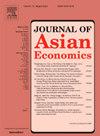Carbon dioxide emission reduction effects of non-economic sector tournaments: Evidence from the national civilized city selection
IF 2.9
3区 经济学
Q1 ECONOMICS
引用次数: 0
Abstract
High-quality economic development necessitates considering the environmental and economic advantages of green and low-carbon growth. Unlike “GDP” promotion tournaments, in non-economic sector tournaments (NESTs), the central government selects cities from various perspectives. It assesses officials’ performance in social civilization and environmental management. National Civilized City Selection (NCCS) awards honorary titles and enhances the brand of winning cities through competition and recognition, avoiding uneven economic growth caused by excessive attention to economic benefits. This study examines NCCS as a key example of NEST and uses a multi-period difference-in-differences (DID) model to explore how effective NESTs are at reducing carbon dioxide (CO2) emissions. Results show that NCCS significantly lowers CO2 intensity while promoting economic and environmental benefits. Mechanism analysis indicates that NCCS achieves this by encouraging greener production, optimizing energy consumption, and strengthening environmental regulations. Moreover, NCCS improves social welfare in winning cities. Cities with more substantial political incentives and higher public environmental literacy exhibit better governance outcomes. Additionally, the NEST framework is particularly effective in reducing CO2 intensity in large, non-resource-based cities and regions with varying development levels.
求助全文
约1分钟内获得全文
求助全文
来源期刊

Journal of Asian Economics
ECONOMICS-
CiteScore
4.70
自引率
9.40%
发文量
90
期刊介绍:
The Journal of Asian Economics provides a forum for publication of increasingly growing research in Asian economic studies and a unique forum for continental Asian economic studies with focus on (i) special studies in adaptive innovation paradigms in Asian economic regimes, (ii) studies relative to unique dimensions of Asian economic development paradigm, as they are investigated by researchers, (iii) comparative studies of development paradigms in other developing continents, Latin America and Africa, (iv) the emerging new pattern of comparative advantages between Asian countries and the United States and North America.
 求助内容:
求助内容: 应助结果提醒方式:
应助结果提醒方式:


